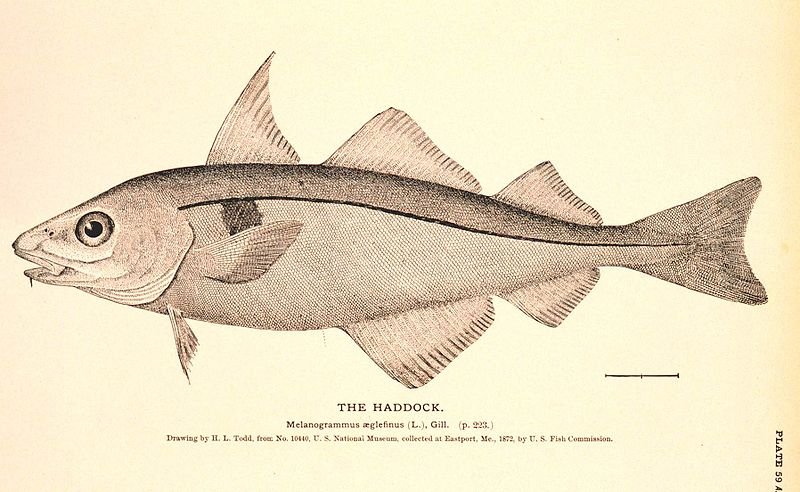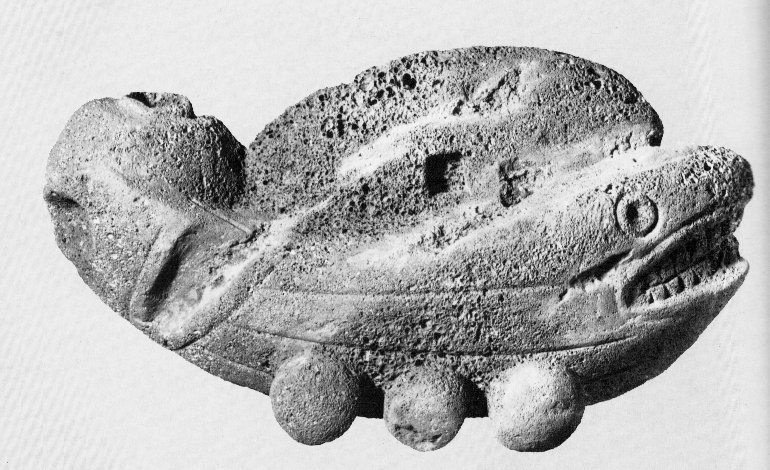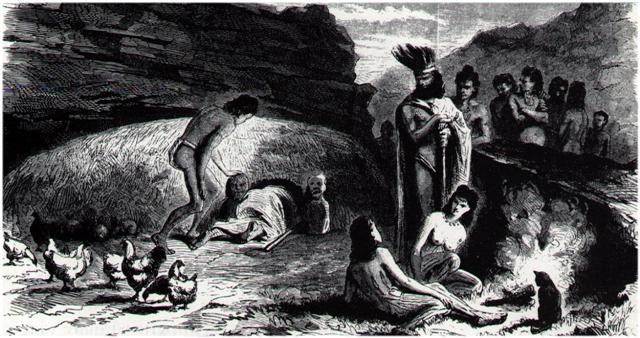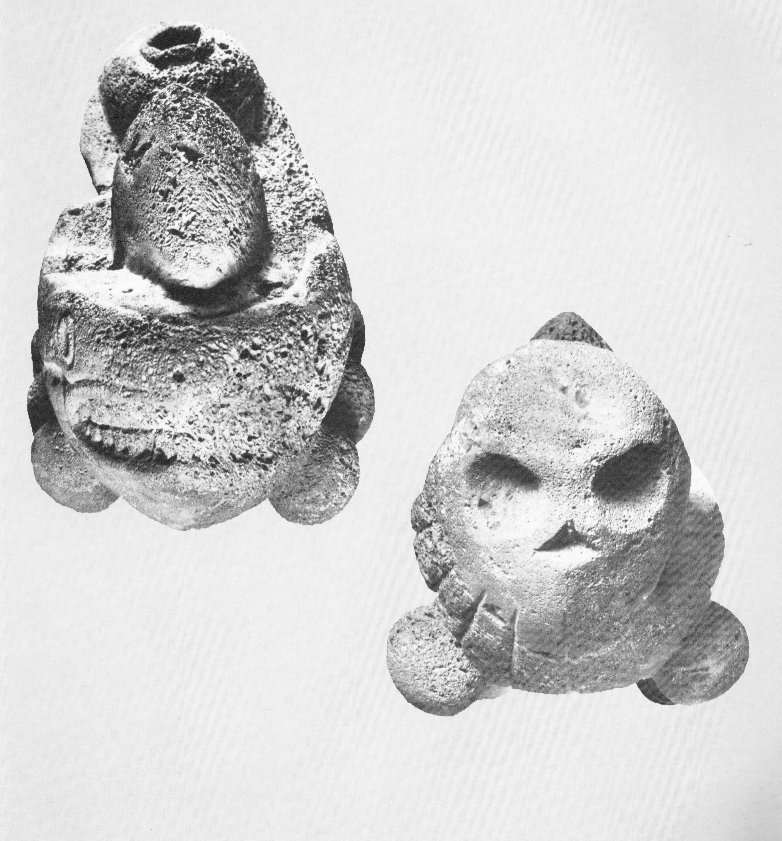|
TRANSLATIONS
The haddock has a dark line running along its side and below the line is a dark square:
 It cannot be a coincidence, I think, that the mythological stone fish from Easter Island has three lines and a dark square above:
 The dark square is the entrance to a hare paega formed as the dorsal fin of the fish. The entrance to a hare paega is normally not exactly square but the resemblance is close:
 Crawling in through the entrance head goes first and it becomes completely dark, because the eyes are calibrated for the outside light and the body is blocking the opening. We are reminded of the rising fish being devoured in the 13th glyph of Te Pei according to Tahua:
Above and below are primary concepts. Above is the sky with its light sources and below, under the surface of the earth, there is water. The surface of the earth is like a line between two kingdoms, that of fire and that of water. The haddock line can be imagined as a picture of the surface of the earth. For the Polynesians, living in the tropical belt, it must early have become evident that the haddock image was wrong. It is not so simple as a light hemisphere above and a black below. The two hemisphere are alike, not different. When sun visits one hemisphere it becomes dark in the other and half a year later the situation is reversed. I guess the three lines along the sides of the stone fish illustrate the tropical belt with equator in the middle. The back side of the fish has a hare paega because the bottom shows sun is located south of the equator - three balls identify his location. With sun present (in front) the back of couse must be in the shadow. Sun is male and the shadow is female. A house is dark inside and a house is female. At midsummer we pass from sun in front into the shadows. Sun is 'born' for us in the darkest of times, e.g. at midnight. If he visits both north and south in equal amounts during one of his cycles, then the inference is that he must 'die' when light reaches its maximum (e.g. at noon). Realizing that north and south are equally good habitats ('wives') for the sun - that 'fire' is present half the time also south of the equator - should transform the idea of a single sun cycle for the year into a concept of two sun cycles. By redefining the 'birth' and 'death' of sun from spring equinox respectively autumn equinox to 'midnight' respectively 'noon', the pattern of the primary time giver (moon) was applied also for the sun. Instead of thinking summer contra winter we must think waxing contra waning. The stone fish has his jaws in front, he grows by eating. The final (tail end) is designed like a death skull:
 Picture at left is the front end of the sun fish, with teeth showing. From this perspective hare paega is looking like a nose. An umu adjoins the hare paega (fire is outside, not inside), and its hole is here looking like the red topknot of a moai statue. The umu comes closer to the end than hare paega, because it is not necessary to light a new sun fire already at 'noon'. In the picture at right the tail end shows how the nose has disappeared and a rhomb has taken its place. Teeth are formed by the ends of the double set of three lines running along the sides of the body. |









